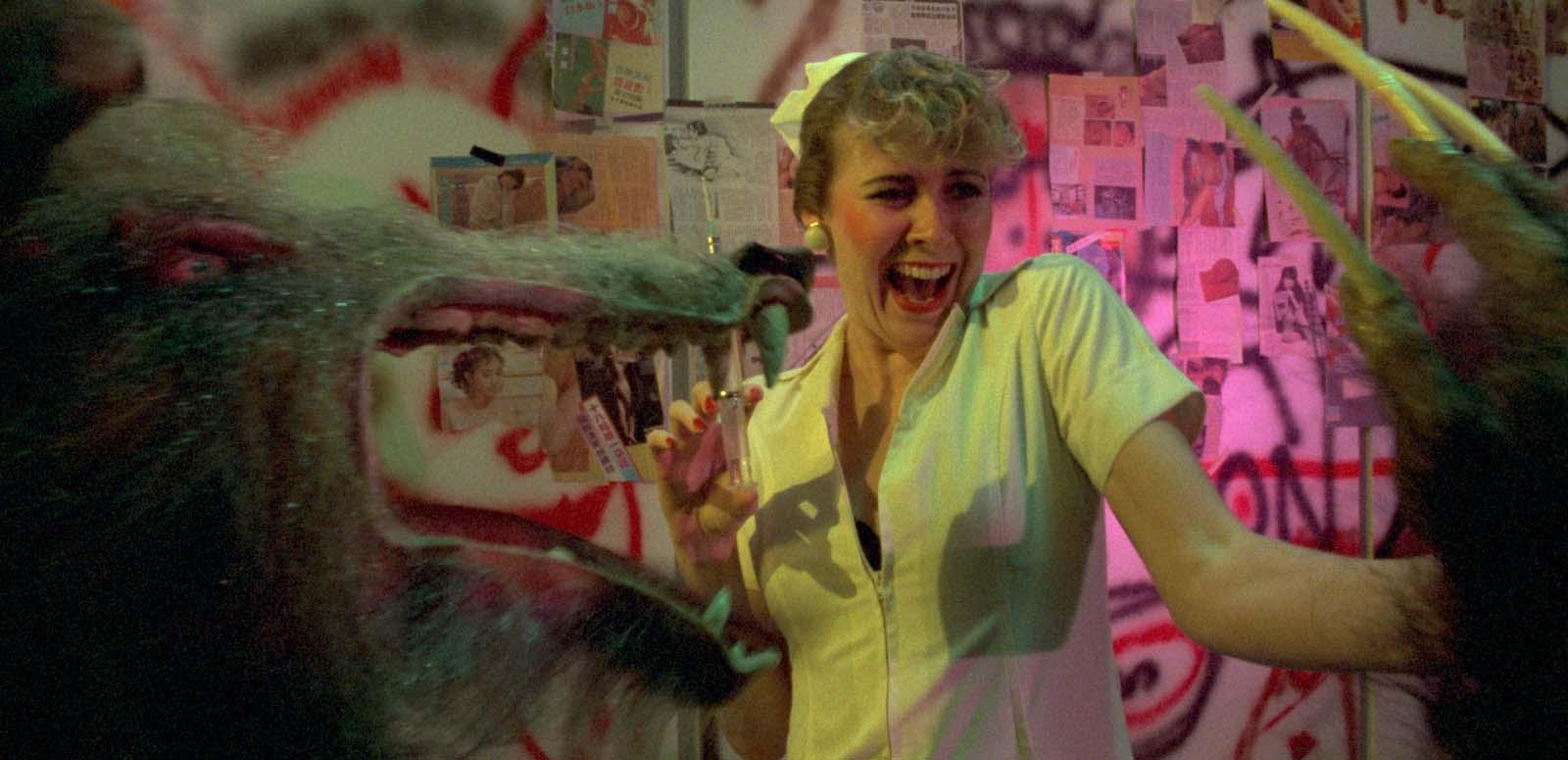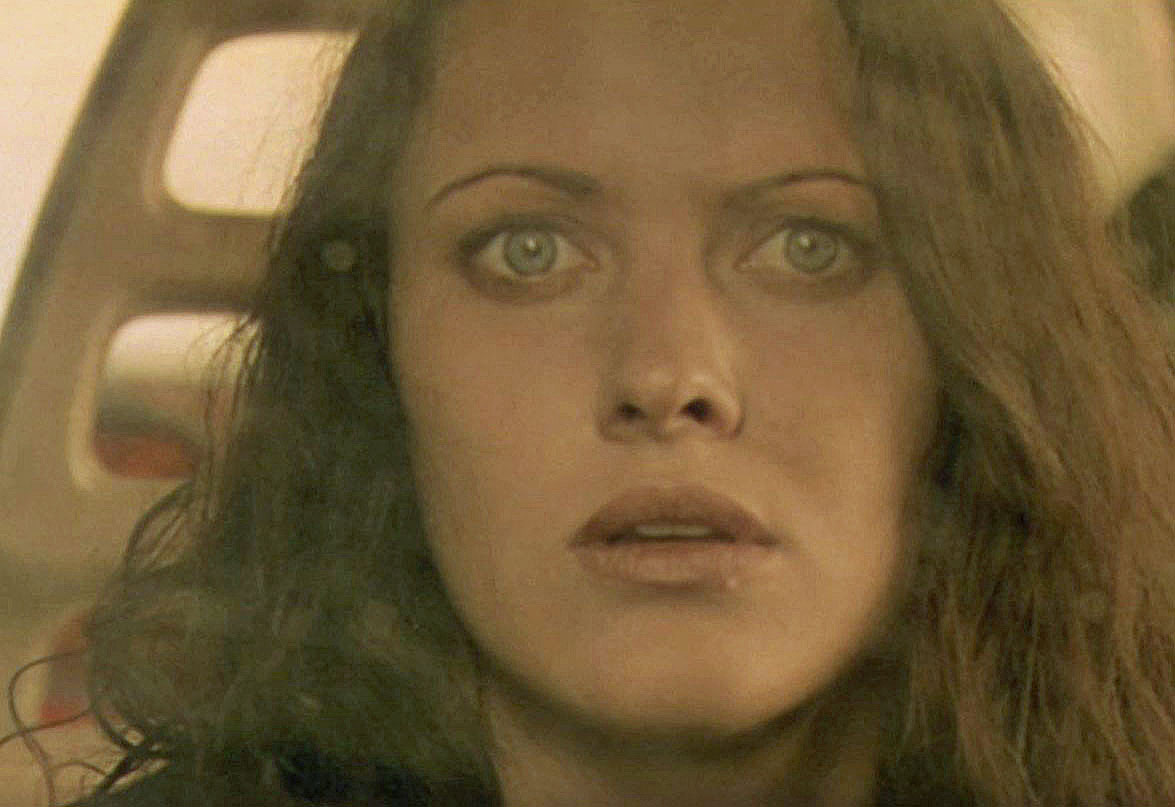While vampires and zombies thrilled audiences in the Northern hemisphere, Australia’s idea of a horror scenario lay somewhere in the vast centre of the continent.


While vampires and zombies thrilled audiences in the Northern hemisphere, Australia’s idea of a horror scenario lay somewhere in the vast centre of the continent.
Australian horror movies were non-existent before the 1970s, and since then have struggled to gain acceptance with local audiences. Many are better known overseas than at home. The poetic mystery of Picnic at Hanging Rock (1975) and the nightmarish underpinnings of the first two Mad Max films are examples of hits with horror elements but Wolf Creek (2005) was the first genuine Aussie horror to score major domestic commercial success.
Excerpt from Wolf Creek, 2005. NFSA title: 612751
It almost defies belief that the Australian film industry failed to produce a single horror movie in its first 70 years. It is understandable that during the 1948-68 period in which almost all horror movies were banned in Australia there was no incentive, but looking back further only a small handful of early Australian features contain any elements of the fantastic, let alone outright horror.
The closest examples are thrillers such as The Strangler’s Grip (1912) and The Face at the Window (1919), an adaptation of F Brooke Warren’s 1897 stage chestnut about a serial killer who howls like a wolf when committing his dastardly deeds. The Guyra Ghost Mystery (1921) and Raymond Longford’s Fisher’s Ghost (1924) touched on supernatural themes but were fashioned more as folk tales than spook shows.
Werewolves, vampires, and zombies ran amok almost everywhere in the silent and early sound era, yet no such creatures can be found in Australian cinema at this time. One contributing factor is literary tradition. Horror movies in America and Europe drew on authors such as Edgar Allan Poe and Bram Stoker, whose stories were infused with dark folklore and centuries-old superstitions. A vast, sparsely populated land that had only been settled by Europeans in 1788 inspired writers to produce tales of pioneer life in beautiful but harsh landscapes.
Excerpt from Wake in Fright, 1971. NFSA title:782560
Fear of that vast place known in the collective consciousness as the outback is at the heart of Kenneth Cook’s 1961 novel Wake in Fright, about a schoolteacher who intends to visit Sydney but instead descends into a nightmarish hell of alcohol and violence during a stopover in a country town. In 1971 it was adapted for the screen by Canadian director Ted Kotcheff. Without any supernatural elements or depictions of crazed killers, it is most certainly a horror movie. Never before or since has an Australian film better expressed that particularly Australian sense of trepidation about what lies beyond the cities in which almost 90 per cent of the population lives.
When Australia’s virtually extinct film industry was resuscitated in the early 1970s, horror movies were slow to appear and generally met with negative critical reaction and poor box-office results. For every Aussie comedy success such as The Adventures of Barry McKenzie (1972) and Alvin Purple (1973), horror obscurities like Night of Fear (1973) by genre stalwart Terry Bourke (Inn of The Damned, 1975; Lady Stay Dead, 1982) and The Sabbat of the Black Cat (1973) passed by almost unnoticed.
Apart from having no tradition in the genre, Australian horror was also affected by ‘cultural cringe’, the term coined by Melbourne social commentator AA Phillips in 1950 to describe a sense of cultural inferiority. Australian audiences then, and to a lesser degree now, believe that horror is done best by Americans and Europeans.
It’s not surprising to find that the only Australian features with horror or supernatural elements to make much of an impression on local audiences in the ‘70s were art house-leaning entries directed by Peter Weir. Picnic at Hanging Rock (1975) is an eerie mystery about disappearances in the bush, and The Last Wave (1977) concerns a city lawyer who experiences premonitions of disaster while defending an Aboriginal man charged with murder.
Excerpt from Patrick, 1978. NFSA title:42718
Australian horror started to find its feet in the late 1970s. Almost single-handedly responsible for the mini-boom that followed was Antony I Ginnane, a globe-trotting producer and executive producer who packaged a series of features geared for international audiences. Often starring imported actors and set in unspecified places, the Ginnane cycle kicked off with the psychokinesis thriller Patrick (1978). Most of the Ginnane movies of this period (Snapshot, 1978; Harlequin, 1980; Turkey Shoot, 1982) performed better overseas than locally.
Awareness of these and many other little-known Australian exploitation films of the ‘70s and ‘80s was raised by the documentary Not Quite Hollywood (2008). A highlight of the formative years of Australian horror is Thirst (1979), a contemporary mix of vampire movie and medical thriller produced by Ginnane and directed by Rod Hardy.
As with Wake in Fright (1971) and Wolf Creek (2005), many Australian horror movies have exploited fears of Australia’s wide open spaces. One of the most interesting is Long Weekend (1978). Written by genre specialist Everett De Roche and directed by Colin Eggleston, it follows a bickering couple into the countryside, where nature takes its revenge.
Other notable Down Under horrors of the late ‘70s include the domestic nightmare of The Plumber (1979), creepy small-town drama Weekend of Shadows (1978), grisly whodunnit End Play (1975) and The Night the Prowler (1978), a beguiling adaptation of Patrick White’s story about suburban horrors in the conservative 1960s.
The 1980s witnessed a dramatic rise in horror production. Slasher entries Nightmares (1980) and Innocent Prey (1984) began to appear alongside psychic thrillers Cassandra (1986) and Out of the Body (1988), and the Aussie monster movie made its belated arrival. A mechanical crocodile was let loose in Dark Age (1987), humans with marsupial and werewolf tendencies ran riot in Howling III: the Marsupials (1987), bloodsuckers showed up in Outback Vampires (1987) and the corpses of Australian soldiers went on the march in Zombie Brigade (1987).
In terms of monster size and production budget, Razorback (1984) stole the show. Directed by pop clip wizard Russell Mulcahy (the first two Highlander films), this blackly comic tale of a giant boar devouring everything in its path was beautifully shot by camera ace Dean Semler (Mad Mad 2, 1981; Bodyline, 1984), and remains a high point of Aussie horror.
The ‘80s also produced Rolf de Heer’s Incident at Raven’s Gate (1988), an intriguing sci-fi themed mystery; Next of Kin (1982), a European-style haunted house thriller; Dead End Drive-In (1986), a futuristic actioner with social satire by prolific director Brian Trenchard-Smith; and Richard Franklin’s Roadgames (1981), a tense road thriller starring Stacy Keach and Jamie Lee Curtis.
One of the most commercially successful was Phillip Noyce’s ocean-set Dead Calm (1989), starring Sam Neill, Nicole Kidman and a chilling Billy Zane.
Excerpt from Dead Calm, 1989. NFSA title:143083
The horror upsurge of the ‘80s gave way to disappointment in the ’90s when little of interest was produced. The suburban splatter movie Body Melt (1993) had some effective moments but far too often Australian horrors were dull and derivative failures starring overseas actors of dubious appeal. Since the turn of the millennium the picture has improved markedly. Cut (2000) was a clever, Scream-like parody of slasher movies starring Kylie Minogue and ‘80s teen-movie queen Molly Ringwald, and Wolf Creek (2005) scared up $16 million at the US box office and a juicy $5.8 million domestically.

In 2003 the highly entertaining zombie splatter comedy Undead announced the arrival of bright new talents Peter and Michael Spierig. Proving this was no fluke, the brothers followed Undead with Daybreakers (2009), a vigorous fantasy–actioner set in 2019, when most of the world’s population has become vampires.
They've continued to work in the horror genre, writing and directing the Australian–US productions Predestination (2014, starring Ethan Hawke and Sarah Snook) and Winchester (2018, starring Helen Mirren).
Like the Spierigs, Adelaide-based filmmaker Alex Frayne self-funded his debut feature, Modern Love (2006), an atmospheric slice of Australian gothic about a man who gradually assumes the personality of his late uncle.
A major horror movie success story that started in Australia is Saw (2004). Arriving in Los Angeles with a short promotional film and a script, young Australian filmmakers Leigh Whannell and James Wan secured financial backing and shot the grisly shocker in the US, where it reaped $55 million and spawned a long-running series. In 2017, the eighth Saw-related movie, Jigsaw, was directed by – The Spierig Brothers.
James Wan and Leigh Whannell have had continued Hollywood and worldwide success. Both have become synonymous with the horror film series that originated with Insidious (2010, written by Whannell and directed by Wan). Wan directed the first instalments in The Conjuring (2013) film series and has continued to guide subsequent spin-off and sequel movies as producer and story writer.
Another influential Australian horror film of recent years was Jennifer Kent's debut film, The Babadook (2014). While its local box-office takings were modest, The Babadook was an international critical success and became the first horror film to win Best Picture at the AACTA / AFI Awards.
Since the late 2000s, government funding bodies and the prestigious training facility AFTRS have taken a much closer look at genre material than has sometimes been the case in the past. There has also been a big increase in the number of independently made horror films, and it’s a good bet that these will be followed into cinemas by many more excursions into Australian horror in the years to come.
A slightly edited version of this article originally appeared on australianscreen online.
Watch clips from some of these films and more in our Australian Horror Films curated collection.
The National Film and Sound Archive of Australia acknowledges Australia’s Aboriginal and Torres Strait Islander peoples as the Traditional Custodians of the land on which we work and live and gives respect to their Elders both past and present.